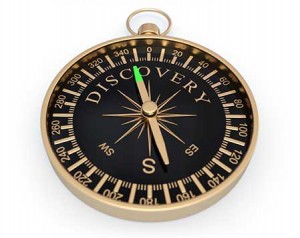Use Discovery To Setup Successful Web Projects
 Whether you’re working on a new web design project or selling to a new prospect, your job as a digital strategist, UX designer, or independent web designer is to first understand your client’s business. The best way to do that is to use a deliberate and focused discovery process. In this post I’ll share what I’ve learned over the years to uncover and better understand my client’s business problems and pain points.
Whether you’re working on a new web design project or selling to a new prospect, your job as a digital strategist, UX designer, or independent web designer is to first understand your client’s business. The best way to do that is to use a deliberate and focused discovery process. In this post I’ll share what I’ve learned over the years to uncover and better understand my client’s business problems and pain points.
Discovery is the only way to properly tee up a web project for success. Moving forward on any digital initiative without a discovery phase is like building a house without a foundation. It just ain’t gonna hold up.
So what exactly is discovery and how do you communicate its importance to prospects and clients?
Focus On Value
Your clients and prospects will likely pay attention to anything that helps them win more business, donors, subscribers or whatever it is they need to accomplish online. A thorough discovery process consists of several meetings between you and your client to 1) see if your mutual skill sets and goals are a good fit, and 2) begin creating a vision of the client’s desired result.
These days a website is just a small part of a larger and more complex online ecosystem. If you build it, they won’t come – unless you make people aware of your online presence through a variety of channels such as social media, email, SEO, and regularly updated content. By making it a part of a larger whole, the website can become the hub that helps drive online revenue.
Asking clients about the current state of their business will open the door to a larger conversation – one that helps them uncover new ways to accomplish their online business goals faster and extract measurable value from their website as a result.
One Topic At A Time
Just as there are many facets of a successful business, there are many facets of a successful web project. It takes a deep dive to examine all the angles. It’s hard to cover everything in just one meeting, so here is a list of topics I usually cover in a typical UX discovery phase:
Stakeholder Interviews
- Identify overall business goals
- Why are these the stated business goals?
- How does the business drive revenue now?
- What are they doing online to drive revenue?
- How does the current website factor into this process?
- What’s working?
- What’s not working?
- Who else needs to be involved?
Review Available Analytics
- How many people are visiting the site now?
- What are their demographics?
- Do you see any typical click paths through the current site?
- What page did they land on?
- What page did they leave on?
- Are specific keywords driving users to the site?
- What device(s) did they use to view the site?
- Is the overall trend upward or downward?
- What external factors may have caused any spikes or dips in the trend?
Competitor Analysis
- Who are the competitors?
- Why are they doing what they’re doing online?
- What’s working for them?
- What’s not working for them?
- Are they doing anything that we can also leverage?
Site Content
- What is the current state of the site’s content?
- What should be kept?
- Can anything be deleted?
- Should any new content be created?
- Who owns the content and what is the process to get it created and approved?
- What language(s) does it need to be in?
Current Site Review
- What’s working with the current site design?
- Can it be improved?
- How are users driven to the current site?
- What makes them want to return to the site?
- How does the business communicate with current and prospective customers online?
Personas
- Based on the research we’ve done, what does an ideal customer/site user look like?
- What are their online goals?
- What are their challenges?
- How can the business help them?
Success Metrics
- Lastly, what does success look like?
- How do we know when we’ve achieved it?
Collaborate With Your Client
You can’t make all this up on your own. Collaborate with your client, either face-to-face or over Skype. It’s a lot to digest, so it’s helpful to spread the discussion out over several meetings if possible. Plus you’ll build rapport with your client as you investigate all the angles.
At the end of the day, a thorough discovery process lets you to deliver more value to customers so they can solve their business problems faster and more effectively. Use it to set yourself ahead of the pack and set your projects up to not only succeed, but to delight your customers as well.
